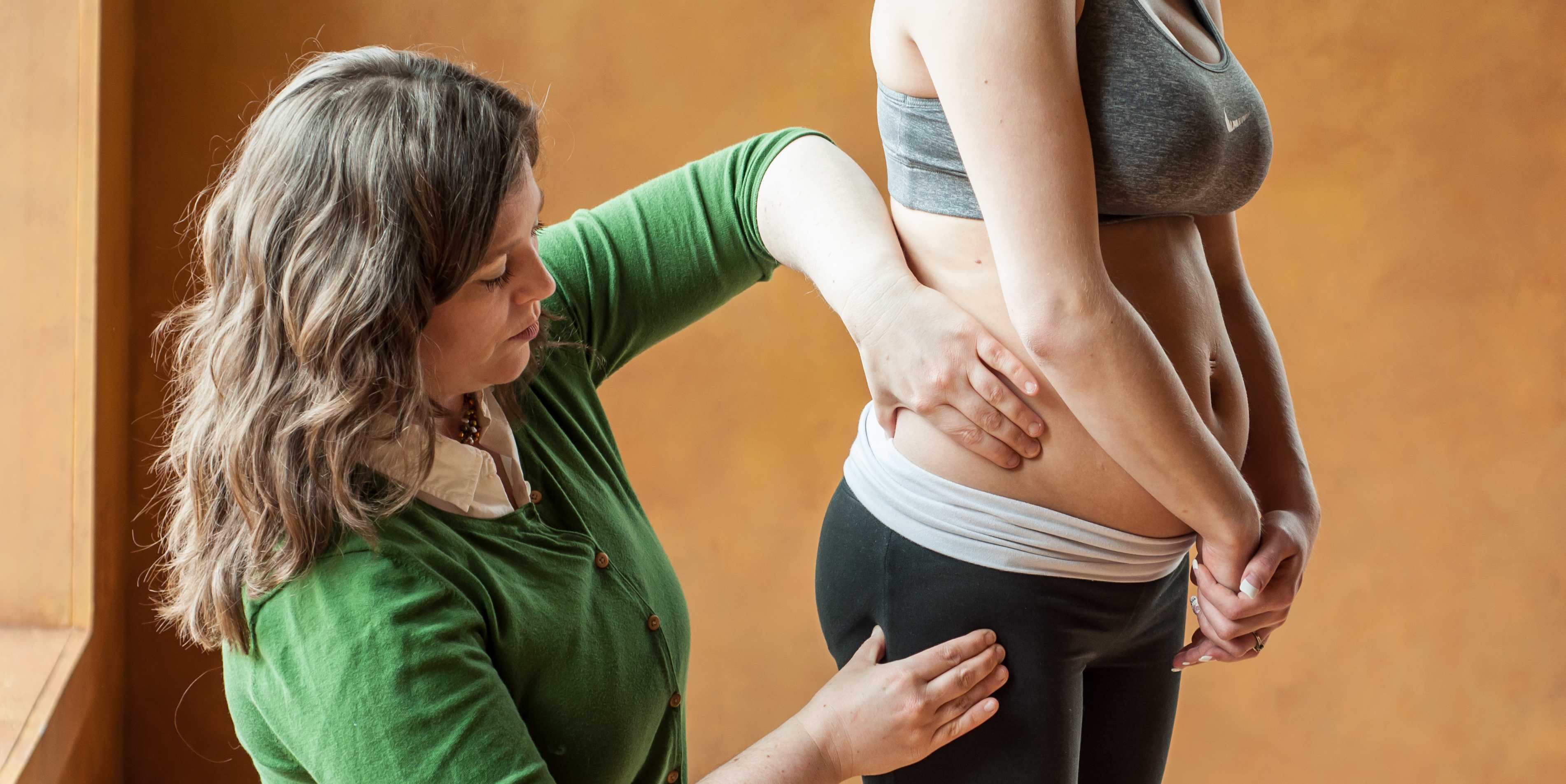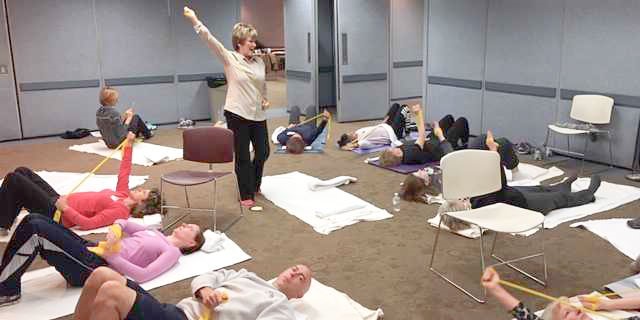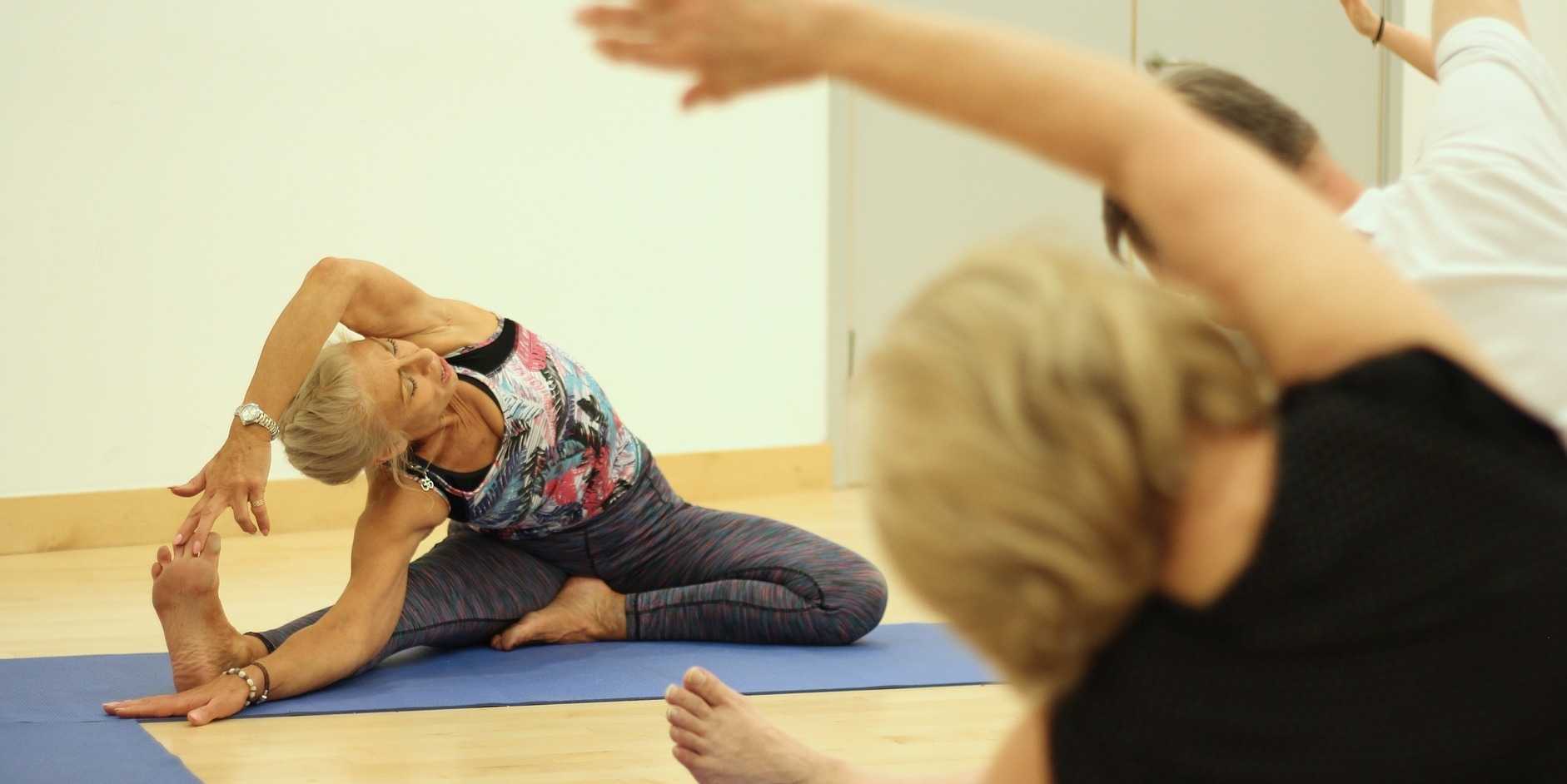Exciting news! Carolyn McManus, Herman & Wallace instructor of Mindfulness-Based Pain Treatment, will be a presenter in programming at the International Association for the Study of Pain (IASP) World Congress on Pain in to be held in Boston, September 11 - 16. This conference brings together experts from around the globe practicing in multiple disciplines to share new developments in pain research, treatment and education. Participants from over 130 countries are expected to attend. The last time it was held in the U.S. was 2002, so it presents an especially exciting opportunity for those interested in pain to have this international program taking place in the U.S. Carolyn will present a workshop on mindfulness in a Satellite Symposia, Pain, Mind and Movement: Applying Science to the Clinic.
Carolyn has been a leader in bringing mindfulness into healthcare throughout her over-30 year career. She recognized early on in her practice how stress amplified patients’ symptoms and, as she had seen the benefits of mindfulness in her own life, it was a natural progression to integrate mindful principles and practices into her patient care. An instructor for Herman and Wallace since 2014, she has developed two popular courses, Mindfulness-Based Pain Treatment and Mindfulness for Rehabilitation Professionals, enabling her to share her clinical and research experiences with her colleagues.
For many patients, pain is not linearly related to tissue damage and interventions based on structural impairment alone are inadequate to provide full symptom relief. Mindfulness training can offer a key ingredient necessary for a patient to make additional progress in treatment. By learning therapeutic strategies to build body awareness and calm an over-active sympathetic nervous system, patients can mitigate or prevent stress-induced symptom escalation. They can learn to move with trust and confidence rather than fear and hesitation.
The following is a guest submission from Alysson Striner, PT, DPT, PRPC. Dr. Striner became a Certified Pelvic Rehabilitation Practitioner (PRPC) in May of 2018. She specializes in pelvic rehabilitation, general outpatient orthopedics, and aquatics and treats at Carondelet St Joesph’s Hospital in the Speciality Rehab Clinic located in Tucson, Arizona.
Recently, I had a patient present with Complex Regional Pain Syndrome (CRPS) on his right foot. He stated that the pain had started about 10 days after his prostatectomy when someone had fallen onto his right foot. He reported a bunionectomy on that foot 7 years prior and noted an episode of plantar facilities before his prostatectomy. CRPS is defined as “chronic neurologic condition involving the limbs characterized by severe pain along with sensory, autonomic, motor, and trophic impairments” in a 2017 article "Complex regional pain syndrome; a recent update" by Goh, En Lin. The article goes on to discuss how CRPS can set off a cascade of problems including altered cutaneous innervation, central and peripheral sensitization, altered sympathetic nervous system function, circulating catecholamines, changes in autoimmunity, and neuroplasticity.
A recent persistent pain theory to explain the relationship between pelvic floor and his foot could be overflow or ‘smudging’ in his homunculus. The homunculus is the map of our physical body in our brain where the feet are located next to the genitals. Possibly when one has pain, there can be ‘smudging’ of our mental body map from one area into another. I have heard this explained as though a chalk or charcoal drawing has been swipes their hand through the picture. A recent study by Schrabrun, SM et al “Smudging of the Motor Cortex is Related to the Severity of Low Back Pain” found that people with chronic low back pain had a loss of cortical organization which and that this loss was associated with the severity and location of LBP.
Kelly Feddema, PT, PRPC returns in a guest post on Pregnancy Associated Ligamentous Laxity. Kelly practices pelvic floor physical therapy in the Mayo Clinic Health System in Mankato, MN, and she became a Certified Pelvic Rehabilitation Practitioner in February of 2014. See her post on diastasis recti abdominis on the pelvic rehab report, and learn more about evaluating and treating pregnant patients by attending Care of the Pregnant Patient!
Pregnancy associated ligamentous laxity is something that we, as therapists, are fairly well aware of and see the ramifications of quite often in the clinic. We know the female body is changing to allow the mother to prepare for the growth and birth of the tiny (or sometimes not so tiny) human she is carrying. We also know that the body continues to evolve after the birth to eventually return to a post-partum state of hormonal balance. Do we think much about what this ligamentous laxity can mean during the actual delivery? Does laxity predispose women to other obstetric injury?
A recent study in the International Urogynecology Journal assessed ligamentous laxity from the 36th week of pregnancy to the onset of labor by measuring the passive extension of the non-dominant index finger with a torque applied to the second metacarpal phalangeal joint. They collected the occurrence and classification of perineal tears in 272 out of 300 women who ended up with vaginal deliveries and looked for a predictive level of second metacarpophalangeal joint (MCP) laxity for obstetric anal sphincter injury (OASI). They concluded that the increased ligamentous laxity did seem associated with OASI occurrence which was opposite of their initial idea that more lax ligaments would be at less of a risk of OASI.
The Institute has welcomed occupational therapists since our founding in 2006. In addition, three OTs: Richard Sabel, MA, MPH, OTR, GCFP, Erica Vitek, MOT, OTR, BCB-PMD, PRPC, and Tiffany Ellsworth Lee MA, OTR, BCB-PMD all teach courses as members of our faculty. (Erica Vitek is also one of several OTs who holds certification as a Pelvic Rehabilitation Practitioner through H&W).
Recently, the Institute was contacted by an Occupational Therapist who has attended many of our courses, regarding a challenge she was experiencing obtaining CEUs in her state (Oregon) for courses on Pelvic Rehab and Biofeedback. In light of this, the Institute has been discussing with some of the occupational therapists on our faculty, as well as representatives of the BCIA and Marquette University, and how to spread awareness about and recognition of OT’s roles in pelvic rehab. Below, we’ve asked faculty member Erica to share a bit more about her journey and the role of the pelvic rehab occupational therapist.
As an OT student, I had a professor who brought in practicing clinicians to discuss their unique roles out in the field. Pelvic health happened to be one of the topics of the day. I was completely intrigued by the clinician, who had such passion about the role of OT in pelvic health. It became clear that helping people with impaired basic bodily functions was imperative to fulfilling life roles and participation; it was OT. I knew from that moment that I wanted to help people deal with these challenging, private issues.
Today's guest post comes to us from Kelly Feddema, PT, PRPC. Kelly practices pelvic floor physical therapy in the Mayo Clinic Health System in Mankato, MN, and she became a Certified Pelvic Rehabilitation Practitioner in February of 2014. To learn more about diastasis recti abdominis, consider attending Care of the Postpartum Patient!
It can be a struggle to treat patients with diastasis recti if they don't seek treatment early after giving birth. Many therapists may often find themselves thinking “if I only could have started them sooner.” Why does this condition often get missed at postpartum examinations? I personally deal with symptoms from an undiagnosed diastasis, and I'm a therapist! I didn’t really pay attention to it until I started down the road of becoming a pelvic floor therapist.
Diastasis recti can be a difficult diagnosis to treat, as the patient may come to us when they are already one year postpartum, and not everyone agrees on the what are the best treatments. To crunch or not crunch? To use a brace or not to brace? It would be great if we had a similar healthcare system to France, where the norm is to have 10-20 postpartum rehabilitation visits with women after child birth. While therapy is available in the United States, women must ask for it.
Today we are excited to share an interview with Beth Anne Travis, PT, DPT, PRPC! While Dr. Travis became a certified practitioner in November 2016, she has been plying her trade with pelvic rehab patients specifically since March of 2015, practicing in North Little Rock, AR. Thank you for talking with us, Dr. Travis, and congratulations on the certification!!
Tell us about your practice
Advanced Physical Therapy is an outpatient clinic in North Little Rock, AR where I treat women, men and children with pelvic floor dysfunction and associated orthopedic conditions.
How did you get involved in the pelvic rehabilitation field?
I thought about the pelvic floor rehabilitation in school but took my first job in pediatrics. Soon after accepting the position, I realized it was not what I envisioned and a pelvic floor career opportunity was presented to me. I took Pelvic Floor Level 2B after accepting the pelvic floor position and began treating my first patients a week later. I know this is what the Lord called me to do.
What/who inspired you to become involved in pelvic rehabilitation?
I was inspired by my mentors and how quickly their patients improved within weeks.
Lee Sowada, PT, DPT, PRPC is a newly minted Certified Pelvic Rehabilitation Practitioner (PRPC) who treats patients in rural Wyoming. Within her community, she relishes the chance to bring pelvic rehab to a more rural environment and provide care that many people in the community didn't know existed. Dr. Sowada was kind enough to share her story with us. Thanks, Lee, and congratulations on earning your certification!
How did you get involved in the pelvic rehabilitation field?
I fell into pelvic health rehab by accident as a student when I was placed in a “Women’s Health” rotation at the last minute. Initially I was disappointed as this was my last clinical rotation and among the longest. However, I fell in love with this line of work almost right away. It was evident from the start that pelvic rehab makes an enormous impact on a person’s life in a way that most outpatient rehab doesn’t. The impairments were private and sometimes embarrassing and they often resulted in social isolation and loneliness with the inability to share it and the assumption that nothing could be done. It was so rewarding to provide support, information and much needed treatment. After that, I never looked back.
In 1998, faculty member Debora Chassé was asked to evaluate a patient with bilateral lower extremity lymphedema following repeated surgeries for cervical cancer. Her formal education did not cover this in school, so Dr. Chassé began to study peer-review research and consult with other clinicians about the diagnosis. Her journey down the rabbit hole began.
Dr. Chassé became a certified lymphedema therapist in 2000 and a certified Lymphology Association of North America therapist in 2001. She continued training by moving into osteopathy taking her into the direction of lymphatic vessel manipulation. In 2006 she began taking courses in pelvic pain and obstetrics with a focus on pelvic floor dysfunction. It was at this point that Dr. Chasse realized nobody was applying lymphatic treatment to women’s health and pelvic floor dysfunction. In 2009 she became a Board Certified Women’s Health Clinical Specialist in Physical Therapy and began traveling around the United States offering workshops in the area of lymphatic treatment.
Dr. Chassé’s approach is to incorporate all her varied skills in the clinic to produce the best patient outcomes. Debora explains that she is “…showing the similarities between pelvic pain and the lymphatic system. The treatment principles are the same, when you are treating both lymphedema or pelvic pain, you are working to reduce inflammation, pain and scarring.”
Jason Hardage is a physical therapist who practices in Alameda, CA. He recently attended the Mindfulness-Based Pain Treatment course which is written and instructed by faculty member Carolyn McManus, PT, MS, MA. Dr. Hardage was kind enough to send in the following review in order to help spread the good word about this powerful course. Your next opportunity to learn how to apply mindfulness practices in your clinic will be in Boston, MA on March 4-5, 2017.
Carolyn McManus' 2-day course, Mindfulness-Based Pain Treatment, was truly outstanding. In my opinion, the integration of mindfulness into healthcare is a paradigm shift and in that sense Carolyn is a visionary who is ahead of her time, as she has been practicing in this arena for many years. Her expertise is clear (as is her joy in teaching).
In this course, she introduces the basic terminology, concepts, and mindfulness practices in a way that is experiential, practical, and accessible, with many tools and techniques to integrate into clinical practice. She thoroughly reviews the evidence in a way that is skillful and compelling and provides the theory as to how mindfulness works, then provides case studies from her own clinical practice. She also provides a brief survey of other tools and approaches that are complementary, such as yoga, loving kindness meditation, and motivational interviewing, then shows how to put it all together, including suggestions for documentation and billing. She is generous in sharing resources, including patient education materials and four open-access guided relaxation and meditation sessions from her Web site, as well as resources for continued study. Furthermore, she presents ways for the healthcare practitioner to use mindfulness for self care, to help combat the burnout that can come with serving those with complex needs in a demanding healthcare environment.
On November 15th, 2016 a new class of Pelvic Rehabilitation Practitioner Certification was crowned! Today we get to celebrate with Andrea Wood, PT, DPT, PRPC from New York. Andrea was kind enough to share some of her thoughts on pelvic rehabilitation and what certification means to her. Thank you Andrea, and congratulations on earning your PRPC credential!
Describe your clinical practice:
I work in an orthopedic clinical practice that has one on one care which I think is valuable. I joined my practice to help offer another view that included pelvic floor knowledge to various patient cases. My coworkers and I collaborate a lot because we both may see things differently, and exchanging ideas is always invaluable for optimal patient outcomes. I really believe the best health care practitioners can admit when they don’t know everything and seek out other viewpoints to learn.
How did you get involved in the pelvic rehabilitation field?
I actually had no idea I originally wanted to do pelvic floor rehab. I was lucky to fall into it right out of graduate school up in Boston at a wonderful place called Marathon Physical Therapy. I found it fascinating how important it was to consider in a lot of patients, especially those presenting with hip, back, or pelvic pain. Two years into working, I found out I had mild congenital hip dysplasia in my left hip and underwent a periacetabular osteotomy to correct it. Going through the rehab on the other side as a patient and having to experience what it means to practice a lot of the principles I teach patients made me excited to continue to help people overcome obstacles. I’m a better physical therapist now because of my personal history. It taught me to always give patients the means to keep moving within their means and not provide only passive treatments. My two physical therapists that helped me through that became my biggest role models on how to approach complicated patient problems.
What patient population do you find most rewarding in treating and why?
I find it most rewarding to work with pelvic pain patients. I like to think of them as a puzzle. With those patients, I’m an orthopedic physical therapist first, because of how much influence other parts of the body can have on the pelvis. I also am a big advocate of collaborative health care with those patients, and when you bring a team of different views together (i.e. medical doctor, physical therapy, nutritionist, and psychologist to name a few) I find I learn something new each time.
If you could get a message out to physical therapists about pelvic rehabilitation what would it be?
It is not just about 3 layers of muscles in your pelvic floor and Kegels. Your pelvis is a center of your body with various biomechanical, vascular, and neurological influences. For example, erectile dysfunction in males can be influenced by pelvic floor muscle dysfunction, cardiovascular health, and psychological or neurological conditions. A woman with painful intercourse could have various contributing factors ranging from a back or hip problem to a dermatological skin issue. I think physical therapists not properly educated on pelvic floor rehab oversimplify it unknowingly.
What has been your favorite Herman & Wallace Course and why?
My favorite Herman & Wallace course was the Pudendal Neuralgia and Nerve Entrapment. That course opened my eyes up to pain science and how much we really don’t know about pain as a medical community.
What lesson have you learned from a Herman & Wallace instructor that has stayed with you?
That the amount of pain a patient may have does not always signify the amount of damage that is present. When patients realize this, they feel a lot more hopeful and in control.
What do you find is the most useful resource for your practice?
I love learning from other physical therapy blogs. Blog About Pelvic Pain by Sara Saunder and Julie Weibe’s blogs are two of my favorites to follow. I lend the book Pelvic Pain Explained to a lot of my patients.
What motivated you to earn PRPC?
I like to challenge myself, and I felt it was a good test to access areas I need improvement in and should study more or seek out further continuing education.
What makes you the proudest to have earned PRPC?
I’m proud to have earned the PRPC because I earned something that I am passionate about. Some people don’t get that blessing.
What advice would you give to physical therapists interested in earning PRPC?
Just being passionate and asking a lot of questions about what I don’t know in clinical practice provided me with best tools to prepare for the exam.
What is in store for you in the future?
Continuing to learn as much as I can. I plan on seeking out some continuing education in areas of physical therapy like neurology or cardiovascular issues that can all still influence the pelvic floor. I think its important to be a well rounded physical therapist.








































